During my visit to Glasgow last spring I managed to sneak in a visit to Auchentoshan Distillery, an easy yet elusive (for me) stop, thanks to my pal David at Clydeside Distillery. On a beautiful spring day I zipped over to Glasgow’s northwest side and got an afternoon’s worth of triple-distilled single malt goodness, a phrase you don’t hear anywhere else in Scotland.
Auchentoshan is different. They are the only distillery in Scotland to have traditionally triple-distilled their whisky, a practice that’s the norm in Ireland (most Scotch whisky is double distilled). Each distillation removes impurities from the spirit, so you can expect a triple-distilled whisky to be freer of impurities than traditional double-distilled Scotch whiskies. On its face this might seem like it makes Auchentoshan and other triple-distilled whiskies superior, but the rub is that many of the flavor complexities we experience in Scotch whisky hail from these so-called “impurities.” Is Auchentoshan then refined, flavorless, or somewhere in between?
Let’s find out.
As my visit was of an ad-hoc nature, it coincided with the standard tour of Auchentoshan’s facilities. This is a handsome distillery on the outskirts of Glasgow, a place that used to be set among farm fields — hence the name Auchentoshan, which means “corner of the field” in Gaelic. I merged with quite a large tour helmed by our guide, Brian, who turned out to have a sense of humor almost as crass as mine and a knack for explaining the intricacies of whisky production.
Brian set us up with a foundational understanding of Auchentoshan. The reason Speyside has so many distilleries is due to historical tax evasion tactics. It’s simply harder to get caught in the highlands. This is is also why highland distilleries have traditionally had “onion” stills — shorter, rounder, onion-shaped stills that might have been easier to break down and secret away when the taxman came snooping. Auchentoshan, on the other hand, has tall stills and began paying tax on their spirit quite early as a result. These tall stills give Lowland whiskies — and this is a stereotype — their lighter, more delicate flavor. It makes you wonder if Lowland whiskies were traditionally lighter or if they decided to make lighter whiskies because “to hell with it, we’re taxed anyway and they can’t make lighter whisky up north!” Another of the universe’s great mysteries.
Auchentoshan, like Clydeside, uses water from Loch Katrine in Loch Lomond and the Trossachs National Park, the same water the entire city of Glasgow drinks. Water is one of the three pillars of making whisky. Barley and yeast are the other two. With a few jabs at the inferior quality of Islay whiskies, Brian explains that Auchentoshan doesn’t use any peat when kilning their barley, which means no smoke in the bottle. He didn’t elaborate on which barley strain they use at Auchentoshan, but the standard these days is Concerto. Meanwhile, they use a yeast from South Africa that produces extremely fruity esters during fermentation.
Speaking of fermentation, Auchentoshan uses a beautiful, copper-domed mash tun that mashes seven tons of barley over the course of eight hours. They pump the sugary wort into ~35,000-liter washbacks, recycle the used grain as feed for local farm animals or as biofuel, and add 80kg of the South African yeast. Fermentation lasts for 60 hours and yields a beer of about 8%. This beer, Brian enunciates, is not be consumed for it will lead to rectal emergencies of the kind that become emergencies for everyone around you as well. The washbacks on display are Oregon pine, but most of Auchentoshan’s washbacks are steel.
In the still room I find three, tall stills side by side. Ironically, they’re onion-esque with wide helmets. The first still in line, the wash still, takes 17,500 liters of 8% wash and gets boiled at 94 degrees Celsius. The height of this still leaves behind heavier impurities and yields an 18% ABV low wine. This liquid is pumped into the intermediate still and mixed with feints from the third still, the spirit still. A distillation in the intermediate still lasts four hours and produces a liquid at 54% ABV called strong feints. Finally, these strong feints go into the spirit still for an eight-hour distillation that produces spirit at 81%! This is an incredibly high average ABV, but characteristic of triple-distillations. It might be strong, but according to Brian it won’t give you a hangover like double-distilled whiskies. Auchentoshan’s distillation process is fascinating and unlike any other in Scotland.
The last stop before the tasting room is Auchentoshan’s warehouse. They’ve actually got five warehouses on site and the one I found myself in held around 1,600 casks. Auchentoshan’s newmake spirit is reduced to 63.5% ABV per industry standards and filled into ex-Bourbon, fine Bordeaux, and Oloroso and Pedro Ximenez casks from the USA, France, and Spain, respectively. The youngest whisky they offer is eight years old, and they’ll use a cask three times before selling it off.
There’s a beautiful aroma in the warehouse as I peruse the sleeping beauties. I spy some excellent Heaven Hill casks, but Brian informs me with a wink that their preferred Bourbon distillery is Jim Beam, now that they’re owned by Beam Suntory.
Well, that’s business. Frankly I don’t detect a lot of influence from the specific Bourbon distilleries in Scotch whiskies. Bourbon casks serve to provide a fairly narrow range of sweet, inoffensive flavors like vanilla, honey, and caramel while taking away the lion’s share of the strong oak flavors. In Scotland’s climate, whisky needs more time to age and inherently powerful barrels would dwarf the newmake spirit over time.
Our fine tour finishes up in Auchentoshan’s tasting room, a very nice horseshoe-shaped watering hole. To my great surprise, we’re giving a cocktail as one of the tastes, a concoction of Auchentoshan’s Bartender’s Dram, pale ale, lemon juice, and simple syrup they call Auchie and Ale. It was even served in an orange tin cup. Honestly, it wasn’t to my tastes and it made me wonder about Auchentoshan’s marketing strategy. Is Auchentoshan angling to be the single malt used in cocktails?
Auchentoshan’s range is impressively large, and I was able to taste a good swath of it, including the Virgin Oak, Blood Oak, 12 Years Old, 18 Years Old, and Distiller’s Cask. Previously I’ve had the Three Wood and American Oak. I even finagled a taste of the newmake, an incredibly fruity taste that evaporated on my tongue.
Let’s get one thing straight: Auchentoshan makes dangerously smooth and drinkable whisky. Whether or not that’s your style is a different question. I found the drams enjoyable and flavorful, though I picked up an edge in most of the drams and my personal preference is for a bit more body. That’s not a knock on Auchentoshan, that’s just my preference: I like heavier, oilier whiskies with more of the “impure” flavors. That said, if you enjoy a lighter, smooth experience, then you’ve got a lot of fun options to explore in Auchentoshan’s range.
I enjoyed my visit to Auchentoshan and Brian’s irreverent humor, but I also found a new appreciation for the spirit despite it not aligning with my tastes. Auchentoshan’s whisky would make an ideal entry to Scotch whisky for both staunch Bourbon and Irish whisky drinkers, and while both Auchentoshan and Irish whiskies are triple distilled, Auchentoshan’s flavor profiles are firmly Scottish.
If you fit that bill, consider picking up a bottle of classic Auchentoshan expression like the 12 Years Old or Three Wood. Who knows? Someday it might lead you to this pretty corner of the field.
Disclosure: I received a complimentary tour courtesy of Auchentoshan distillery. All thoughts and opinions expressed here, as always, are my own.




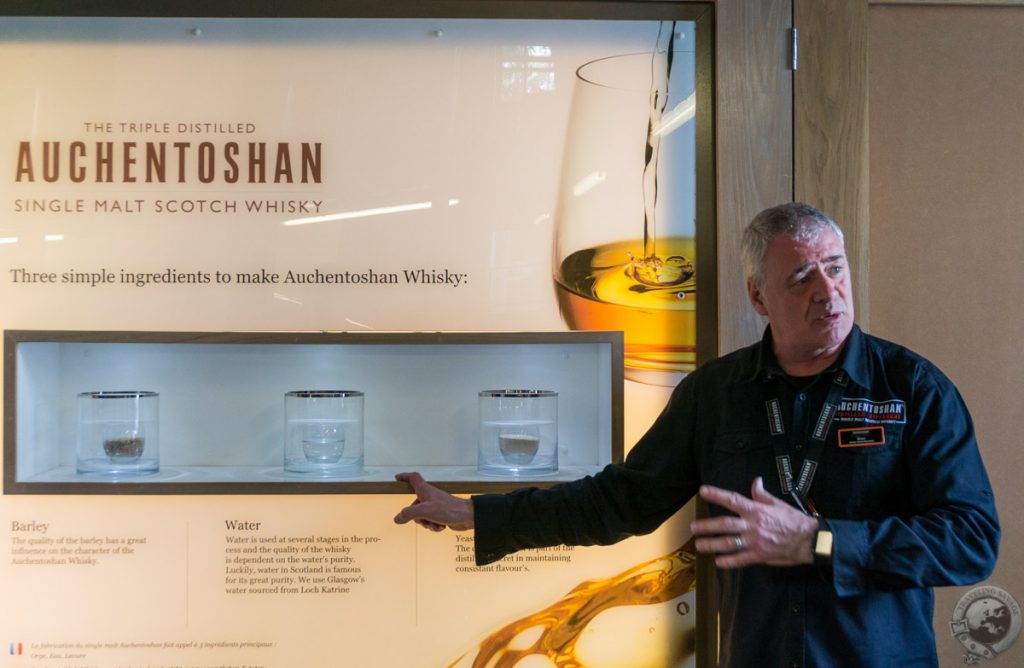
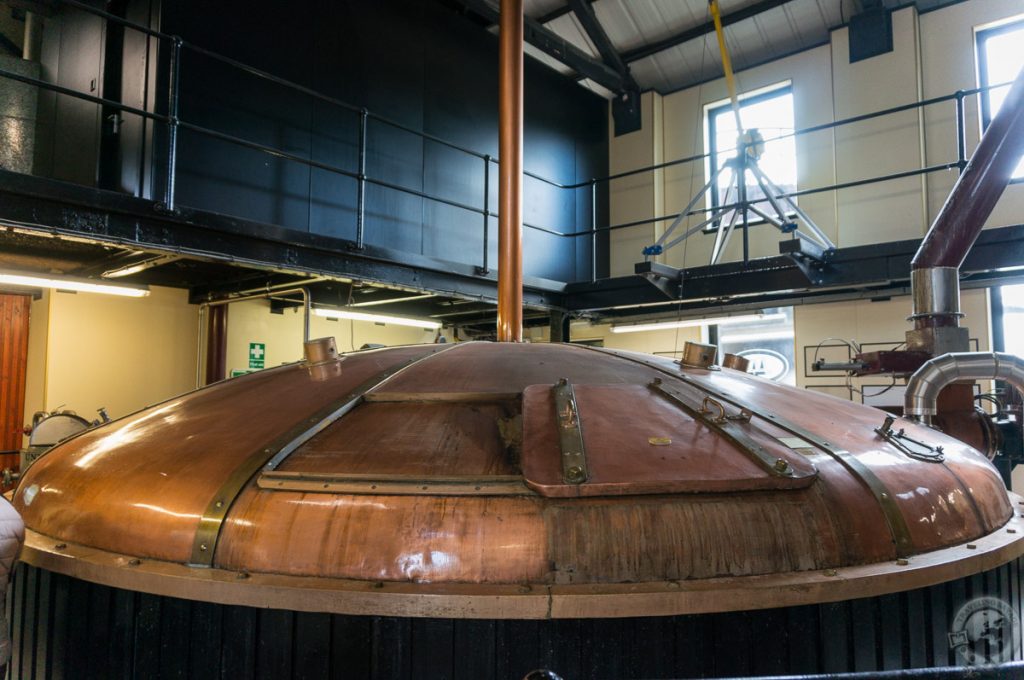
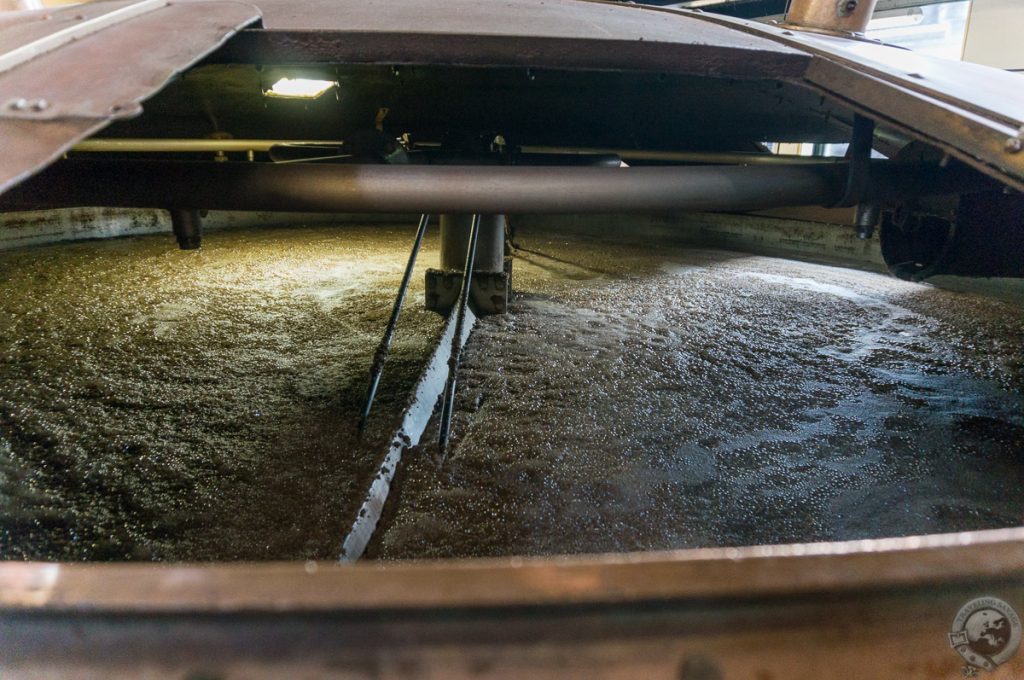
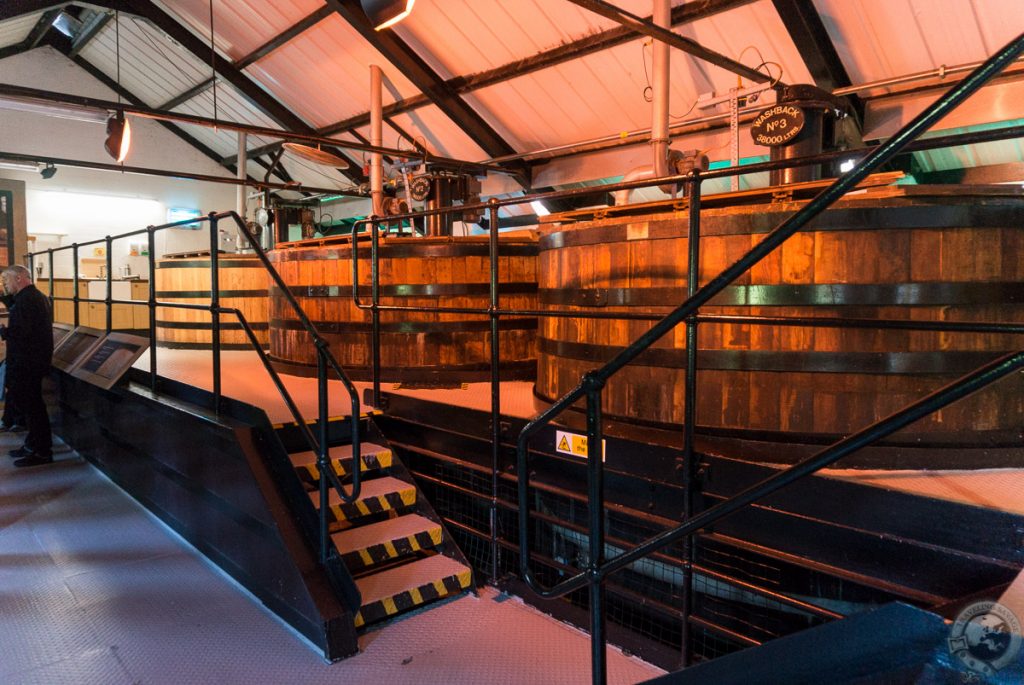
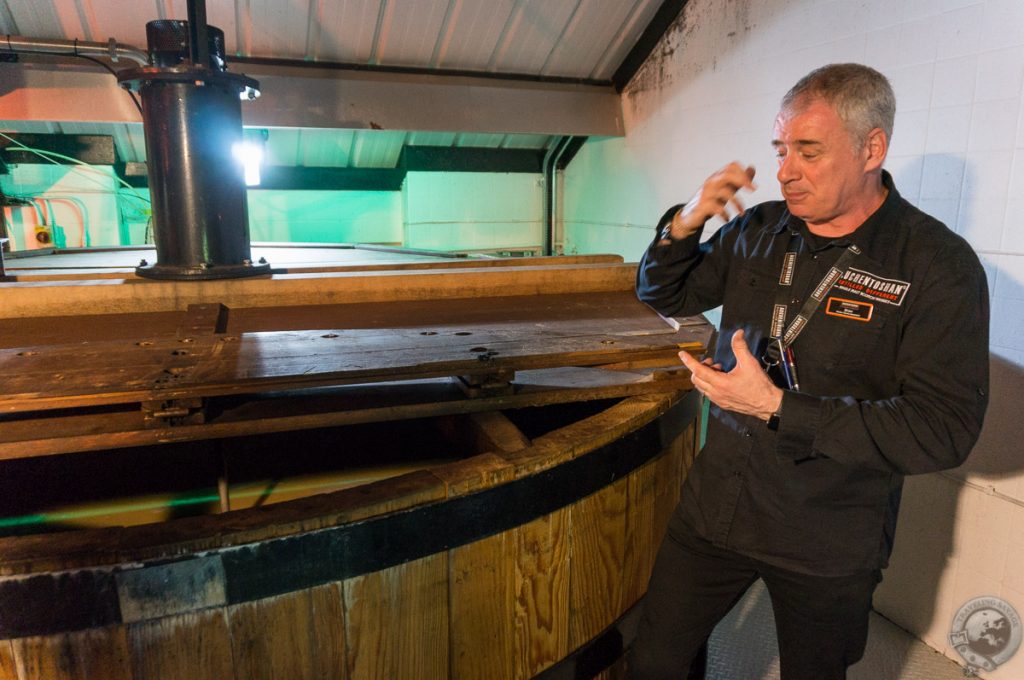
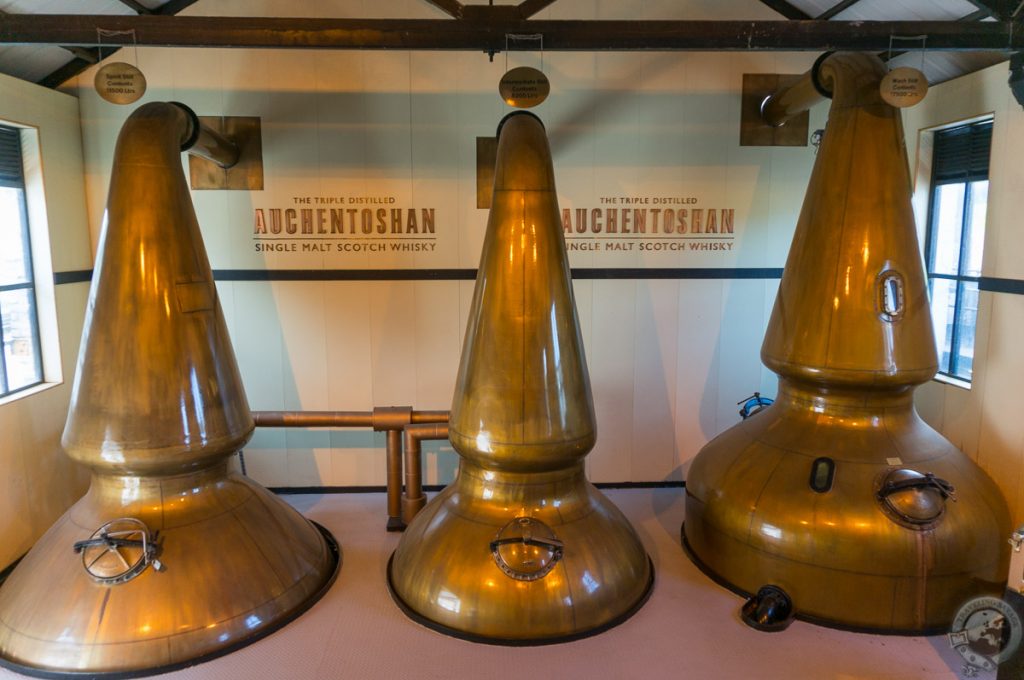
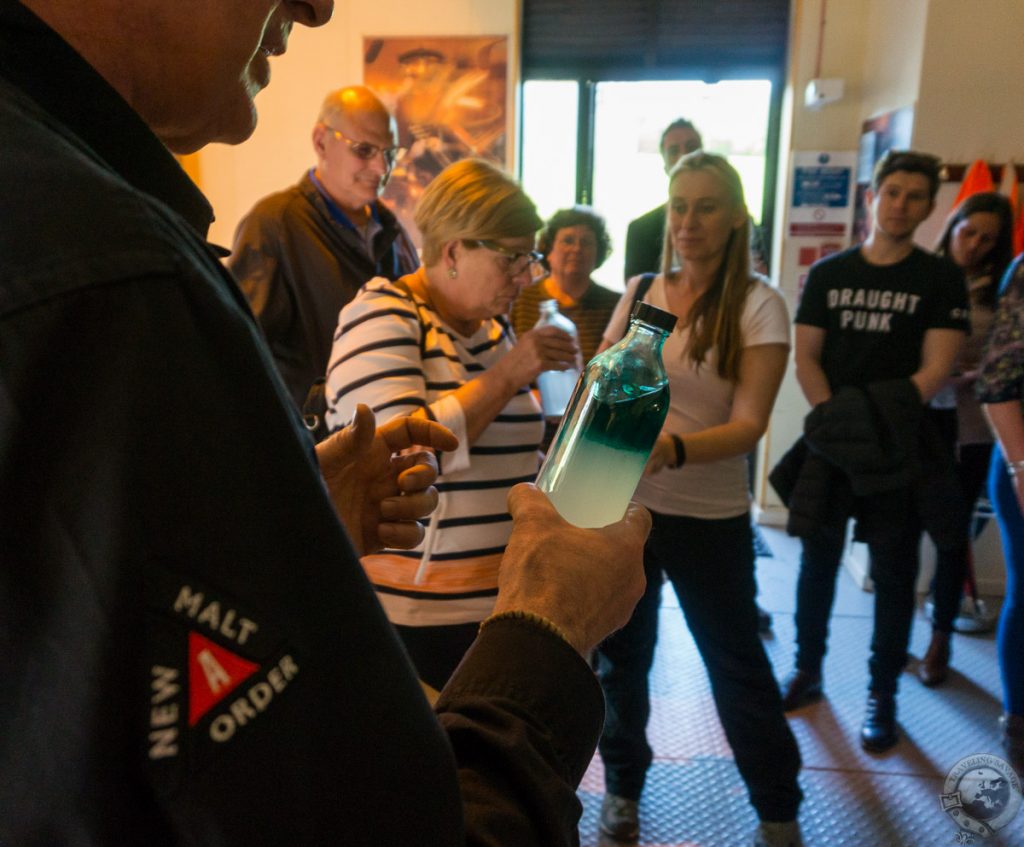
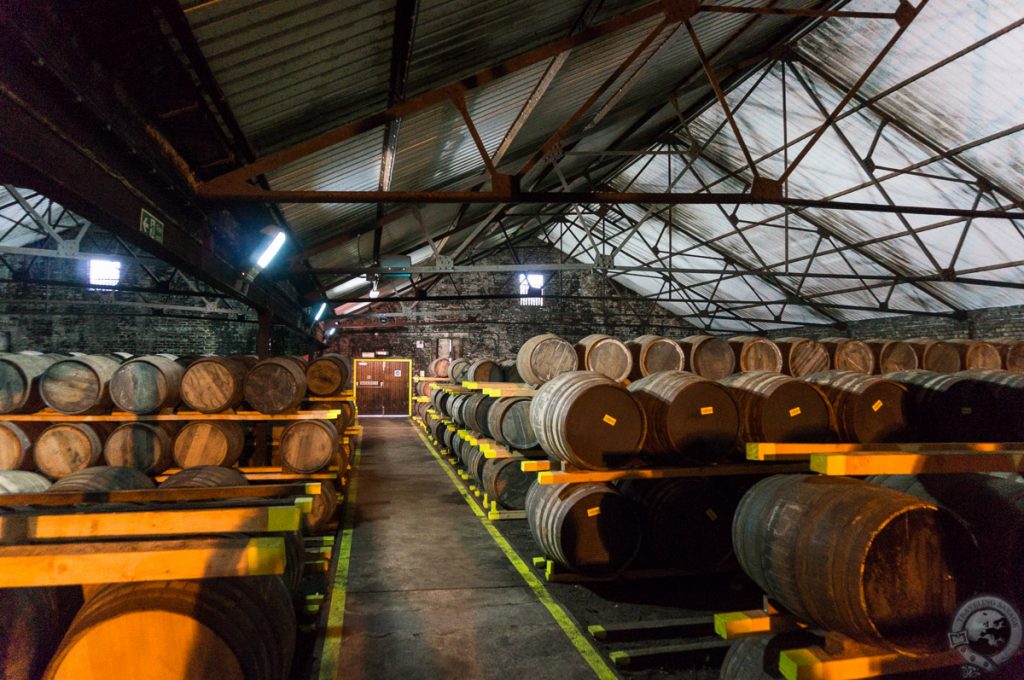
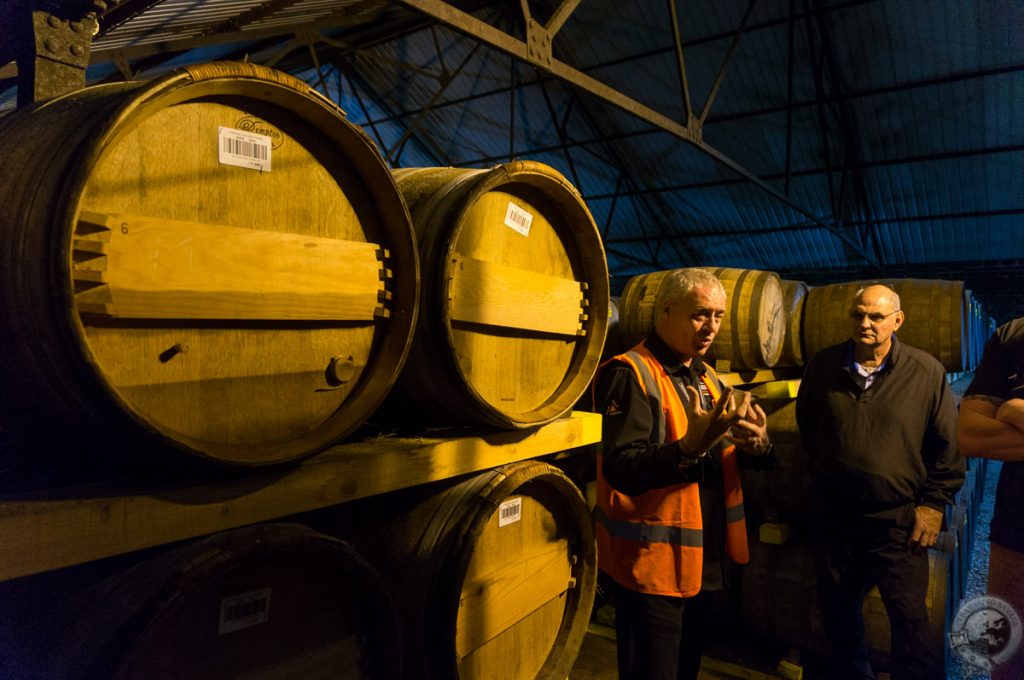
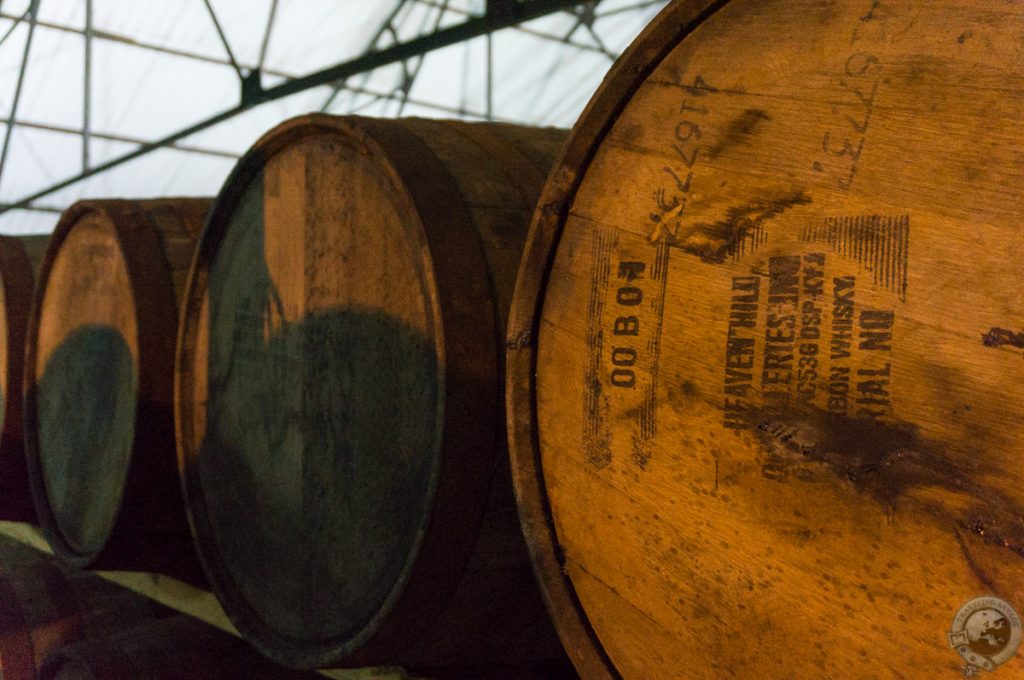
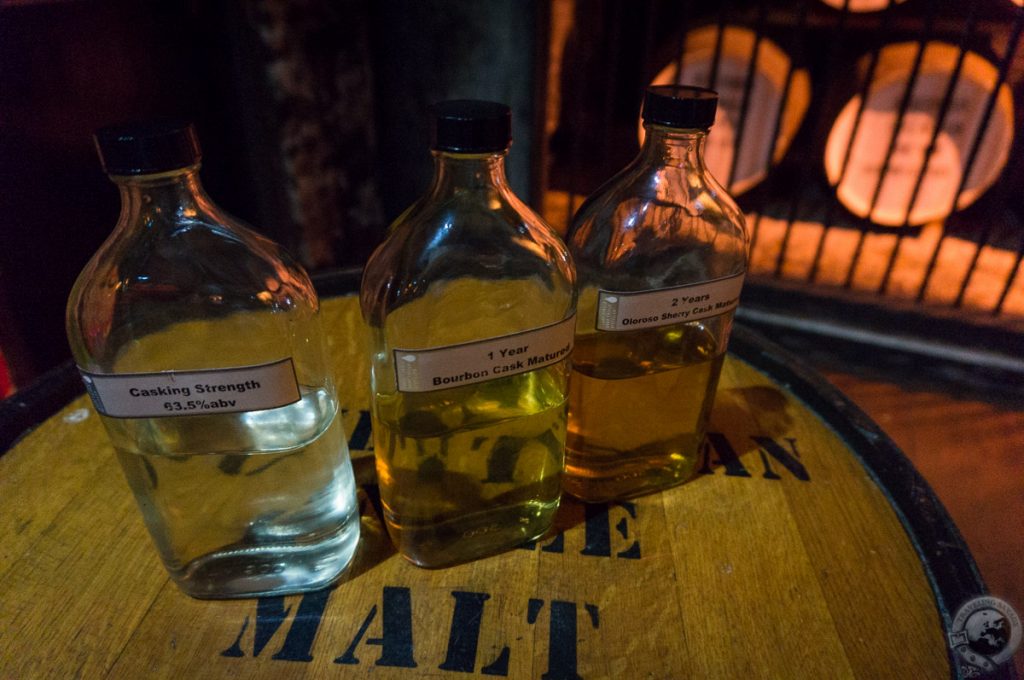
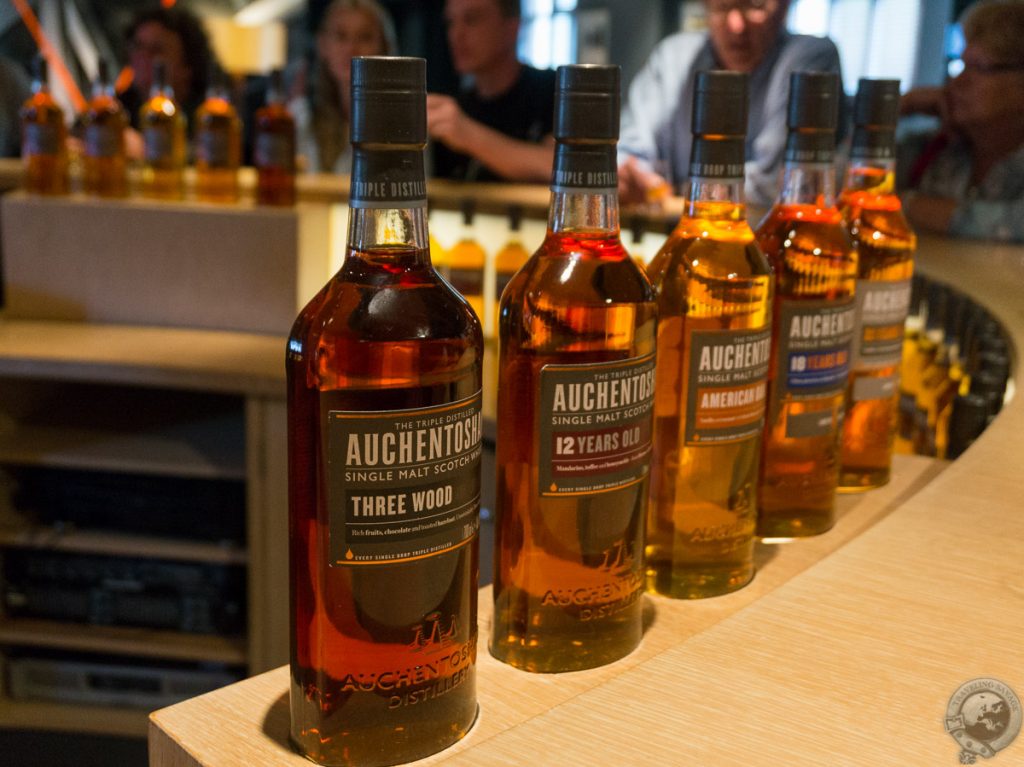
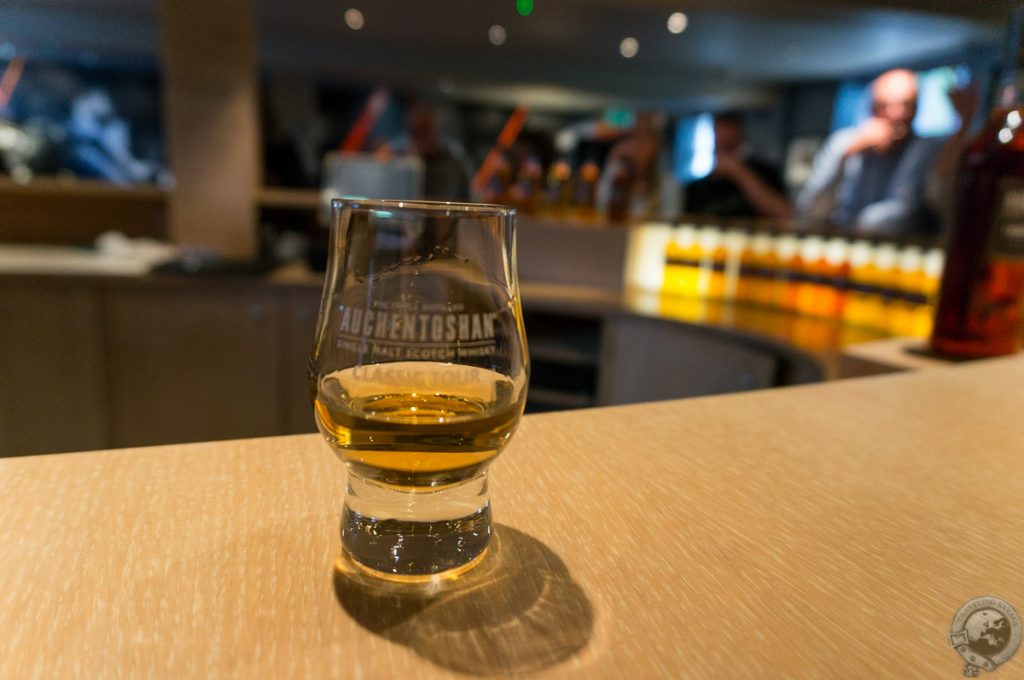
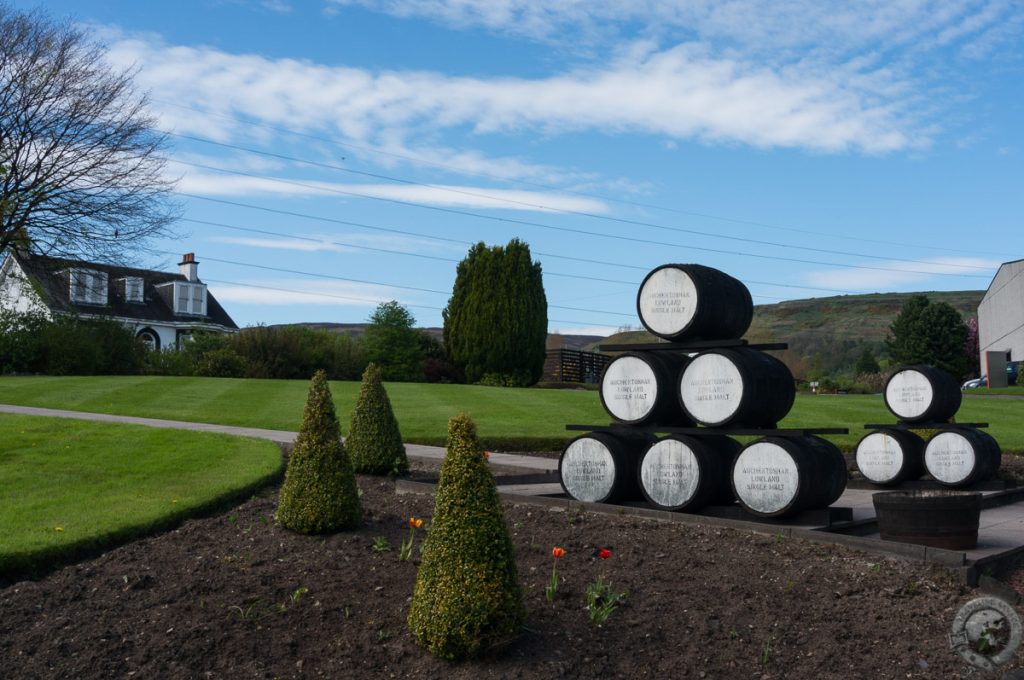
I have been at Auchentoshan on a couple of tours, and thought the two were great (very different tour guides, with interesting outlooks). I thought your review and comments were spot-on, and provided a great read. Incidently, I live within a couple of mile from the distillery, and had never visited this until a few years ago, which was a birthday gift. Wasn’t actually looking forward to it (it was a non-production day – and early Sunday), but this proved to be a brilliant day out. Have bought a few different bottles since – something I would never have thought of before the tour.
Thanks again.
Jim